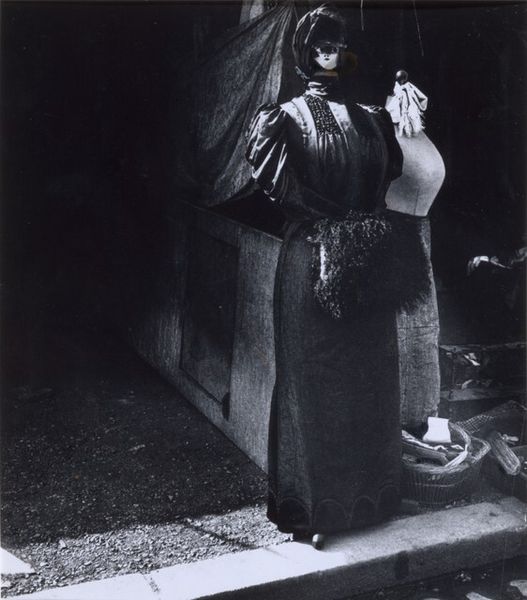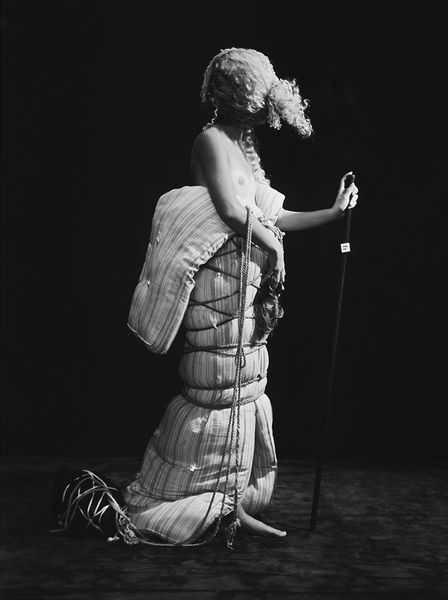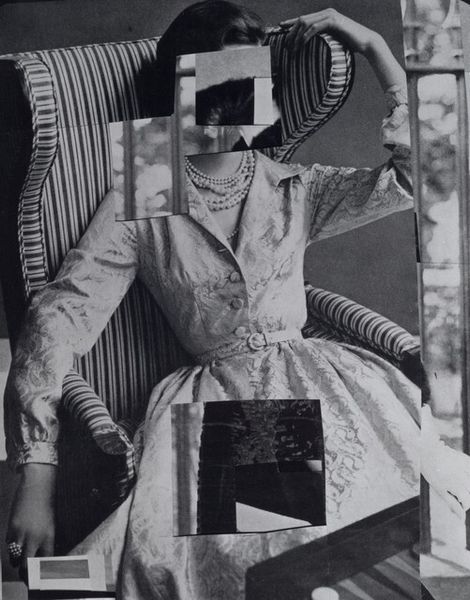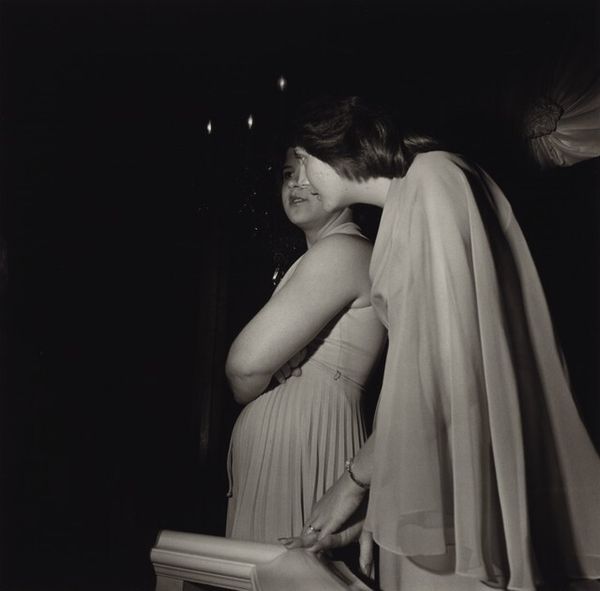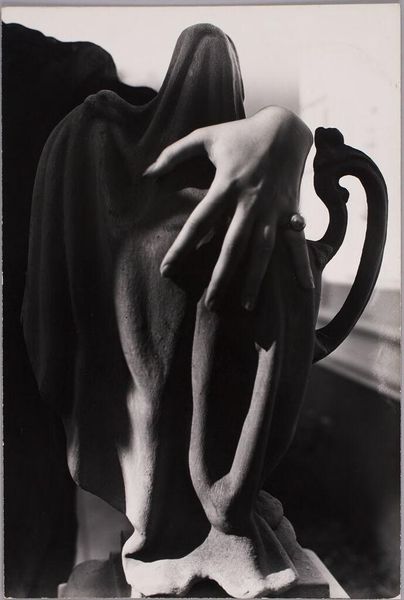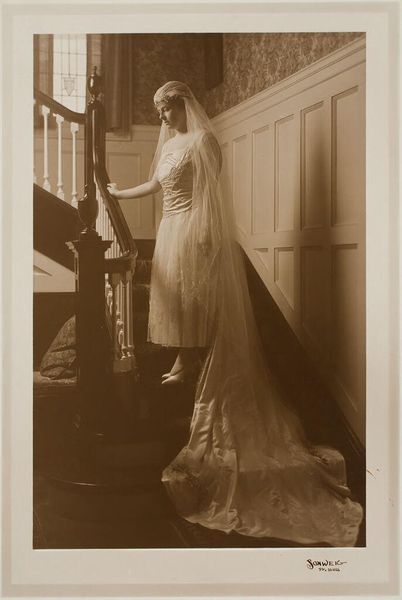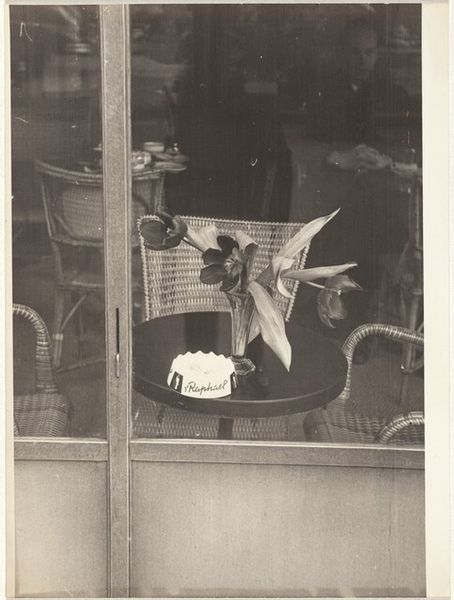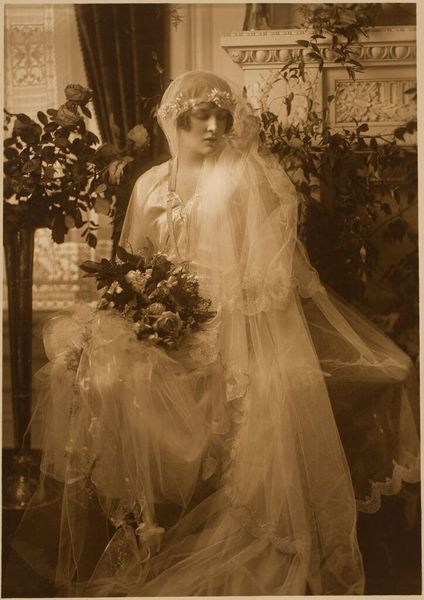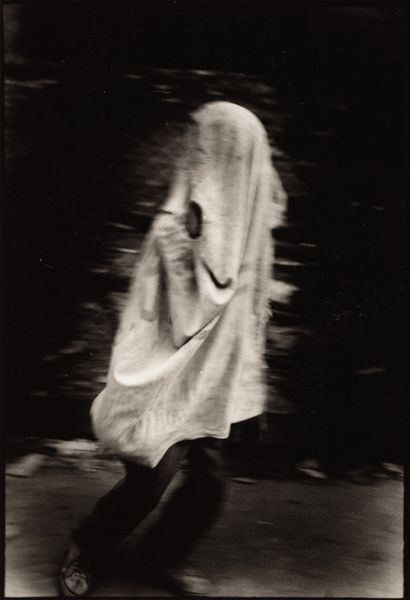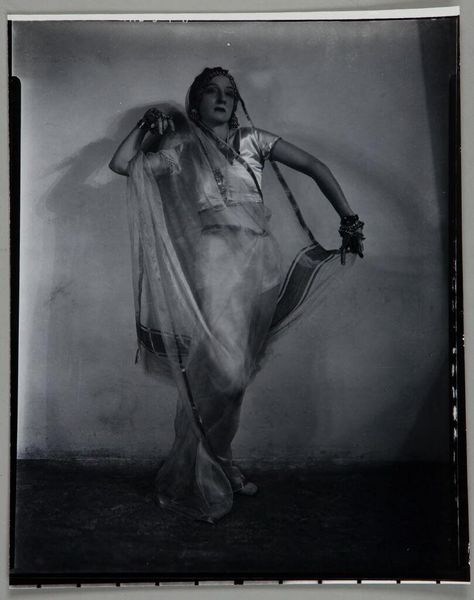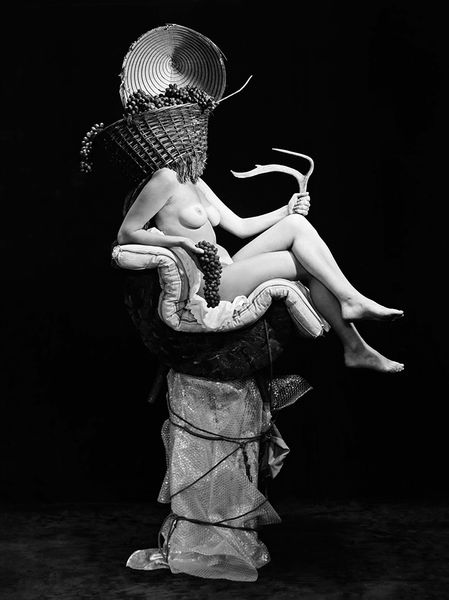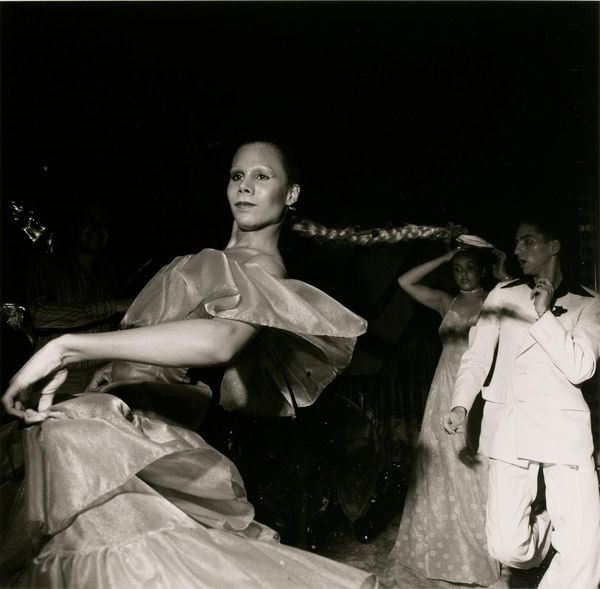
photography, sculpture
#
portrait
#
sculpture
#
figuration
#
photography
#
sculpture
#
monochrome
#
monochrome
Dimensions: image: 25.6 × 18.1 cm (10 1/16 × 7 1/8 in.)
Copyright: National Gallery of Art: CC0 1.0
Curator: Let's discuss "Doll," a compelling photograph dating from the 1930s. Editor: There's a distinct surreal quality to it. The stark monochrome and tight cropping enhance a feeling of unease and the doll seems frozen in a perpetual state of anticipation or perhaps resignation. Curator: Considering its likely creation in the 1930s, a period marked by widespread economic hardship and political upheaval, the doll itself takes on a symbolic weight. It seems representative of vulnerability, lost innocence and social inequality. The worn fabric of its clothing and those makeshift wings speak to the conditions of many during that era. Editor: Absolutely. The image presents a captivating study in textures and form. The smooth surface of the doll's face contrasts with the rough, almost distressed appearance of its hair and dress. It strikes me that this tension enhances the artwork’s overall effect and reinforces the visual narrative. Curator: I am particularly drawn to the gaze of the doll. It's averted, perhaps indicative of a lack of agency, resonating with feminist readings around the representation of women, and childhood under patriarchal systems. We also need to consider the photograph itself, and the art of photography in that period: did the artist decide to use monochrome, or did it come from the restrictions of colour photography in the 1930s? How do we read photography as 'truth', in comparison with something clearly constructed as a doll. Editor: The monochrome palette is highly effective in simplifying the visual elements, highlighting the essential structure. In terms of compositional strength and distribution, it gives precedence to line and form: look at how the angular forms in the background draw the viewer back into the scene from the figure, enhancing its imposing, unsettling nature. Curator: And while an immediate reaction might be to read into its vulnerability, one can equally approach this through the context of women defying conventions and challenging restrictive gender roles, a symbolic disruption during a restrictive period. Editor: It’s a work that really demands attentive engagement and certainly a memorable experience. Curator: It makes for such a vital visual statement of those formative years.
Comments
No comments
Be the first to comment and join the conversation on the ultimate creative platform.
